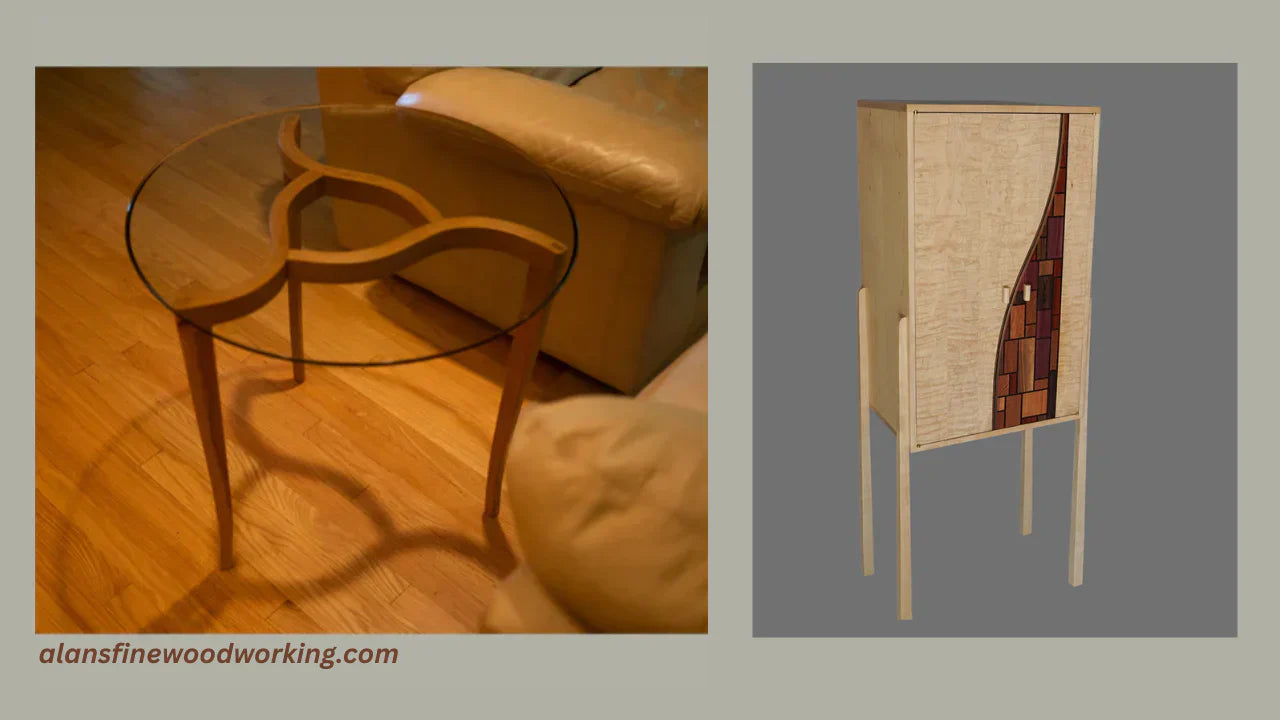
Commissioning A Custom Piece of Furniture
Why Choose Custom Handcrafted Furniture?
Have you ever wandered into a museum that exhibits antique furniture, some of it many hundreds of years old? It’s usually not in perfect shape but it is sometimes in better shape than some of the more recently produced furniture you have in your own home. Ever wondered how they did that? Usually, it’s because the artisans that created it used solid woods and joinery that is often no longer used in mass produced furniture because materials can be expensive and those time-consuming joinery methods have been exchanged for ultra-thin veneers, nails and screws. Opting for custom handcrafted furniture is an opportunity to get those materials back using time tested joinery but with a modern aesthetic. It is also more than just buying another piece of mass-produced furniture - it’s about investing in a something that is uniquely yours. Something that reflects your taste and needs in a way that big box furniture can rarely do. It comes down to three elements: Quality, Durability and personal taste.
The process
Congratulations. You’ve decided to turn a need and idea into a unique, tangible, functional work of art. Unlike mass-produced items, custom furniture is tailored to your specific needs, preferences, and space, resulting in a one-of-a-kind creation that reflects your personal style. What comes next is a collaborative effort involving several key stages each designed to ensure the final piece aligns with your needs and aesthetic preferences.
Initial Consultation and Design
The process begins with an in-depth consultation where we discuss your ideas, intended function of the piece, and aesthetic preferences. This stage involves sharing an understanding of how and where the piece will be used. A photograph of the space and room it will occupy is very helpful to get a sense of your style. Often there are other pieces of furniture that inspire you but don’t quite meet your needs. Sharing these is also very helpful. Do you know what kind(s) of wood you really like? An advantage of custom furniture is the ability to use almost any kind of wood you want if it’s available. The same piece of furniture with different wood can look dramatically different.
Design and Material Selection
After the initial consultation, design proposals are developed. These may include simple sketches, 3D renderings on a CAD system or, sometimes, an almost photorealistic design on Photoshop. This collaborative phase allows for adjustments and refinements to the design. It is an exciting phase because it’s when your concept starts to take shape visually.
Design review
You’ll review the proposed designs and provide feedback. This step is crucial for making adjustments before the build begins, ensuring every detail is how you want it. The design phase often includes a bit of back and forth, but this fine-tuning ensures the end result is exactly what you want.
Material selection and finish is next and both will significantly impact the piece's appearance. The beauty of custom handcrafted furniture lies in part on the type and quality of the materials chosen. You’re not limited to what’s available off the shelf of typical lumberyards.
You will be kept in the loop as much or as little as you like. Calls and photos have even on occasion been exchanged from the lumberyard when selecting wood. Some people, for example, love the lighter color of sapwood in walnut or cherry. It can make a great highlight. Others want a more uniform appearance. What we want to do is make sure we are all on the same page in terms of design and aesthetics.
Budget
Your budget plays a crucial role in material selection, design complexity, and finish. Be open and clear about what you’re willing to spend to ensure a transparent process.
Designing a custom piece takes as much time as designing for mass production. But the cost is not amortized over many pieces. Small shops also do not always have some of the industrial machinery available to factories including automated cutting machines. While power tools are used wherever possible, hand tools are also used freely to get the precise fit and shape desired. That all takes time. The cost of a piece is also affected by its complexity. We love to make use of curves as they make much more interesting furniture. But making and joining curved pieces is also significantly more time consuming than joining things at right angles.
Production and Craftsmanship
Once the design is finalized and approved, the crafting process starts. This phase involves meticulous attention to detail, from precise joinery to the application of finishes, ensuring the piece meets high standards of quality and craftsmanship. Depending on the complexity of the design and the schedule, production can take several weeks to months. You will get photos of the work in progress.
Delivery
After completion, the custom piece is ready for use. If it needs to be shipped, a custom, well-padded crate is custom made to ensure it arrives in your home the in the same shape it left the shop.
Contact The Artist at Alan's Fine Woodworking
Contact The Artist at Alan's Fine Woodworking
Accepted Payments:
Copyright 2025 ©
Alan’s Fine Woodworking
| All Images subject to copyright


